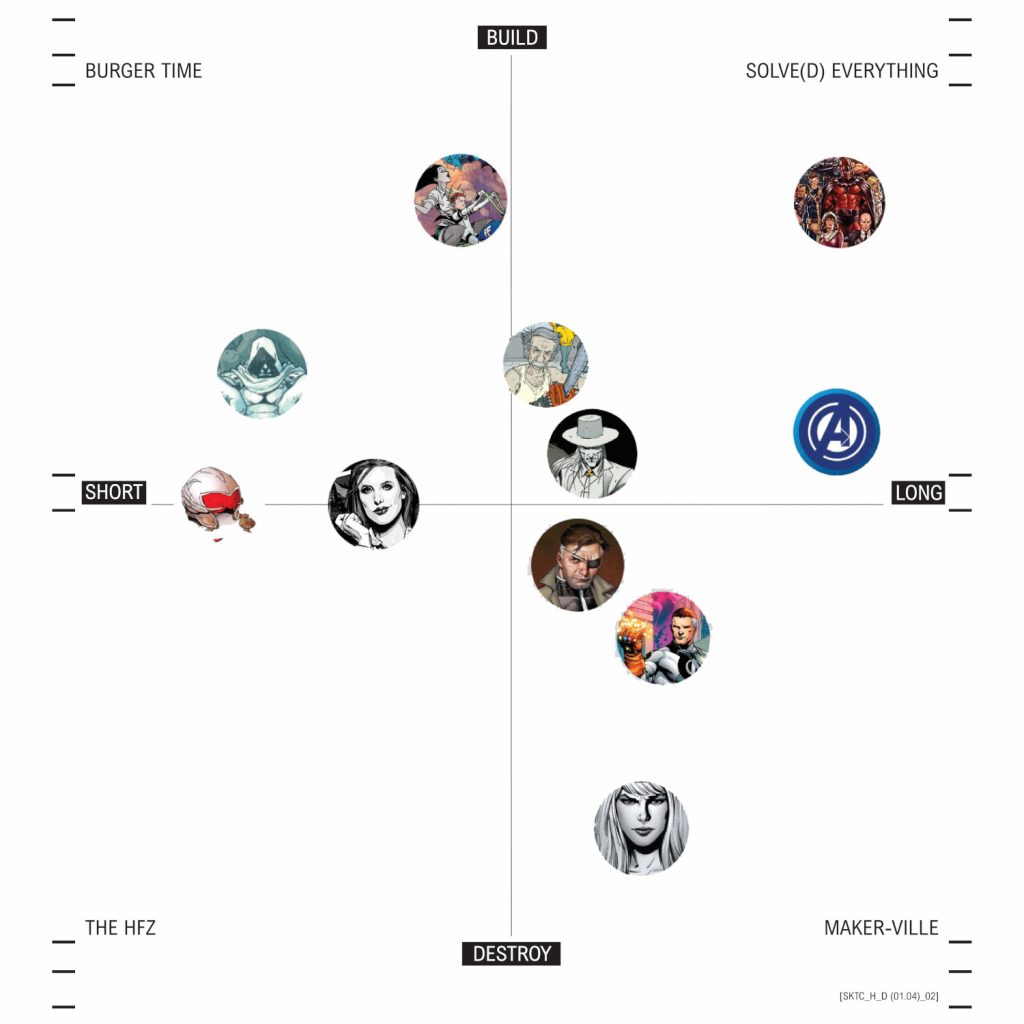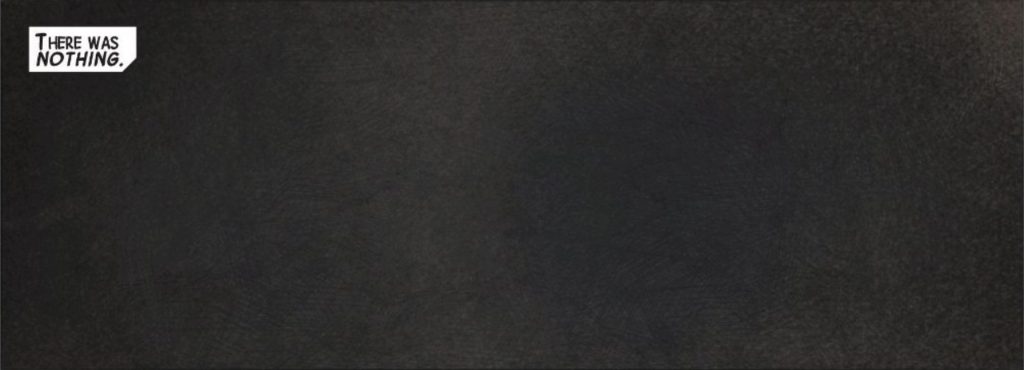A Graphical Understanding of Jonathan Hickman’s Work
A few years back, I analyzed Jonathan Hickman’s collected works as part of my now deceased weekly newsletter, The Crossover. As a big fan of…well, everything he’s ever written, I thought it’d be a fun exercise to look back on his career and works with a Hickman-esque angle to the whole thing, analyzing it in a way that fit his general approach and aesthetic.
You might be wondering what that means, exactly. Well, it means putting together a graphical understanding of his collected works, classifying each piece into a different quadrant and class in the process.
It just made sense to do that, as if we know anything about Hickman – besides that he’s a man with a plan – it’s that he loves incorporating design elements into his comics. He’s like if a comic creator was fused with a data visualization professional, which makes sense, because he kind of is? 10 And it’s not just that he randomly uses cool looking charts and assorted circles in his work. It’s narrative, all of which makes his comics better. In short, it’s incredible and a huge part of what makes Hickman as good as he is at all of this.
With Hickman’s appearance on Off Panel this week and House of X and Powers of X in the rearview mirror, I thought it was time to dust this puppy off – refreshed to match the HOXPOX aesthetic as much as possible – and reexamine Hickman’s career in such a way, breaking down the majority of his efforts by looking at two main variables and with a couple key rules in mind.
First, the variables. One is simple, as it’s time, or the length of his run on a book more specifically. The other is whether he builds or destroys within the project, which is far trickier than time, obviously. One complication with that variable is he does both in the vast majority of his projects, with destruction often leading to rebuilding or vice versa. So as with any variable, it’s a net number. The amount of net destruction within a project (or building, if that’s the case) creates the other half of each title’s placement in our fancy graph.
Second, key things to consider when it comes to this exercise. I’m not charting everything, instead focusing primarily on the titles he writes entirely himself and ones beginning with The Red Wing, the Image series he did with Nick Pitarra in 2011 that introduced me to his work. I also mostly focused on titles that are either complete or are far enough along you can get a definite sense of where they’d fall on these respective spectrums. 11 That’s it! Those are the key considerations to this endeavor.
Here’s the graph.

Our variables create four quadrants, and because they’re so different, I’m going to examine not just the titles within, but the reason behind the name. Note: I did keep the name for the quadrant from before, but they still make sense in the context of Hickman’s oeuvre, so I saw no reason to change them. We’ll dig into the sections individually, starting with the one that’s notably…empty. There’s a reason for that, of course, and its name is a hint right up front.

The HFZ (short, destroy)
HFZ in this case is, of course, an acronym. It stands for “Hickman Free Zone,” as this is a story quadrant we’ll likely never, ever see Hickman work in. The HFZ is the land of short stories that lean on the side of destruction, and he mostly uses destruction as a path to building something on the ashes. Because of that, short runs don’t make sense for the “destroy” side of things, unless it’s – again – leading to a rebuild in short order or working as a way station between two other connected works. Some of his comics were close to fitting here, but as a rule, tie goes to the build, especially considering the vast majority of his books are always trending upwards at the end (at least from a charting standpoint).
Also, in the rare cases where his destructive side does take over, you better believe he’s going to make a meal out of that. If you’re going to destroy the world, you might as well luxuriate as you do. Take your time. Enjoy yourself. That and his natural builder lean is why this will eternally be The Hickman Free Zone.
Comics included: Nothing, and there won’t ever be anything here, I imagine.
subscribers only.
Learn more about what you get with a subscription
Before getting into comics, Hickman worked in the advertising world as a designer (or art director if you prefer industry specific lingo).↩
That’s why there’s no The Dying and The Dead included.↩
Before getting into comics, Hickman worked in the advertising world as a designer (or art director if you prefer industry specific lingo).↩
That’s why there’s no The Dying and The Dead included.↩
Quick note: As much as I love burgers, I’m not sure I would eat the burger from Miles’ pocket in Secret Wars. I know Molecule Man is not exactly choosy in this situation, but can you imagine how smashed and old that thing would be? Disgusting.↩
I mean proper flagship, because they’re all big in my heart.↩
Of course, the narratives of most writers would probably have that shape, as second acts tend to be low points before everything gets better in the end.↩
This makes no sense if you haven’t read East of West, but if you have, you know what I’m talking about.↩
I’m projecting forward for this entry, as it seems as if this will be a very long run when it’s all said and done.↩
Before getting into comics, Hickman worked in the advertising world as a designer (or art director if you prefer industry specific lingo).↩
That’s why there’s no The Dying and The Dead included.↩
